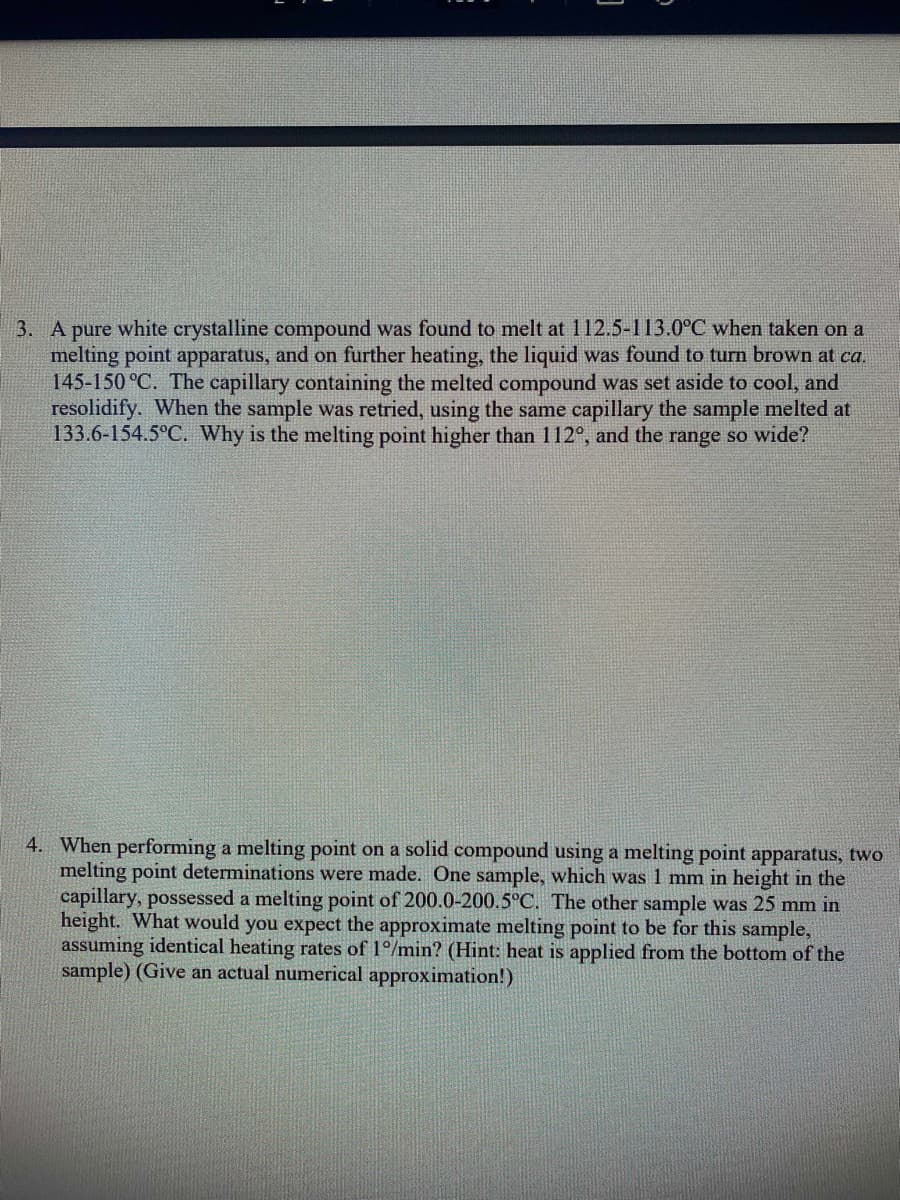A pure white crystalline compound was found to melt at 112.5 C when taken on a melting point annaratus and on further heating he liguid was found to turn brown at ca
A pure white crystalline compound was found to melt at 112.5 C when taken on a melting point annaratus and on further heating he liguid was found to turn brown at ca
Macroscale and Microscale Organic Experiments
7th Edition
ISBN:9781305577190
Author:Kenneth L. Williamson, Katherine M. Masters
Publisher:Kenneth L. Williamson, Katherine M. Masters
Chapter5: Distillation
Section: Chapter Questions
Problem 2Q
Related questions
Question
100%

Transcribed Image Text:3. A pure white crystalline compound was found to melt at 112.5-113.0°C when taken on a
melting point apparatus, and on further heating, the liquid was found to turn brown at ca.
145-150 °C. The capillary containing the melted compound was set aside to cool, and
resolidify. When the sample was retried, using the same capillary the sample melted at
133.6-154.5°C. Why is the melting point higher than 112°, and the range so wide?
4. When performing a melting point on a solid compound using a melting point apparatus, two
melting point determinations were made. One sample, which was 1 mm in height in the
capillary, possessed a melting point of 200.0-200.5°C. The other sample was 25 mm in
height. What would you expect the approximate melting point to be for this sample,
assuming identical heating rates of 1°/min? (Hint: heat is applied from the bottom of the
sample) (Give an actual numerical approximation!)
Expert Solution
This question has been solved!
Explore an expertly crafted, step-by-step solution for a thorough understanding of key concepts.
This is a popular solution!
Trending now
This is a popular solution!
Step by step
Solved in 2 steps

Recommended textbooks for you

Macroscale and Microscale Organic Experiments
Chemistry
ISBN:
9781305577190
Author:
Kenneth L. Williamson, Katherine M. Masters
Publisher:
Brooks Cole

EBK A SMALL SCALE APPROACH TO ORGANIC L
Chemistry
ISBN:
9781305446021
Author:
Lampman
Publisher:
CENGAGE LEARNING - CONSIGNMENT

Macroscale and Microscale Organic Experiments
Chemistry
ISBN:
9781305577190
Author:
Kenneth L. Williamson, Katherine M. Masters
Publisher:
Brooks Cole

EBK A SMALL SCALE APPROACH TO ORGANIC L
Chemistry
ISBN:
9781305446021
Author:
Lampman
Publisher:
CENGAGE LEARNING - CONSIGNMENT